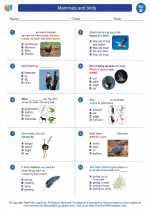Synthetic Rubber
Synthetic rubber is a man-made polymer material that is designed to mimic the properties of natural rubber. It is created through the process of polymerization, where monomers (small molecules) are chemically bonded together to form long chains called polymers. These polymers can then be processed and vulcanized to produce a material with rubber-like properties.
Properties of Synthetic Rubber
- Elasticity: Like natural rubber, synthetic rubber can stretch and return to its original shape.
- Resistance to Heat and Chemicals: Synthetic rubber can withstand high temperatures and is resistant to many chemicals, making it suitable for a wide range of applications.
- Durability: It is long-lasting and can withstand wear and tear.
- Variety: There are different types of synthetic rubber with varying properties, such as neoprene, nitrile rubber, and silicone rubber.
Uses of Synthetic Rubber
Synthetic rubber has a wide range of applications across various industries, including:
- Tires for vehicles
- Industrial hoses and belts
- Footwear
- Seals and gaskets
- Insulation materials
Study Guide
To understand synthetic rubber better, here are some key points to focus on:
- What is the process of polymerization and how is it used to create synthetic rubber?
- Compare and contrast the properties of natural rubber and synthetic rubber.
- Research and present the different types of synthetic rubber and their specific uses.
- Investigate the environmental impact of synthetic rubber production and explore any sustainable alternatives.
By studying these aspects of synthetic rubber, you will gain a comprehensive understanding of its production, properties, and applications.
.◂Science Worksheets and Study Guides Second Grade. Mammals and birds
Study Guide Mammals and birds
Mammals and birds  Activity Lesson
Activity Lesson Birds & Mammals
Birds & Mammals  Worksheet/Answer key
Worksheet/Answer key Mammals and birds
Mammals and birds  Worksheet/Answer key
Worksheet/Answer key Mammals and birds
Mammals and birds  Worksheet/Answer key
Worksheet/Answer key Mammals and birds
Mammals and birds  Worksheet/Answer key
Worksheet/Answer key Mammals and birds
Mammals and birds  Vocabulary/Answer key
Vocabulary/Answer key Mammals and birds
Mammals and birds 

 Activity Lesson
Activity Lesson
 Worksheet/Answer key
Worksheet/Answer key
 Worksheet/Answer key
Worksheet/Answer key
 Worksheet/Answer key
Worksheet/Answer key
 Worksheet/Answer key
Worksheet/Answer key
 Vocabulary/Answer key
Vocabulary/Answer key

The resources above cover the following skills:
LIFE SCIENCE (NGSS)
Biological Evolution: Unity and Diversity
Students who demonstrate understanding can:
Make observations of plants and animals to compare the diversity of life in different habitats[Clarification Statement: Emphasis is on the diversity of living things in each of a variety of different habitats.] [Assessment Boundary: Assessment does not include specific animal and plant names in specific habitats.]